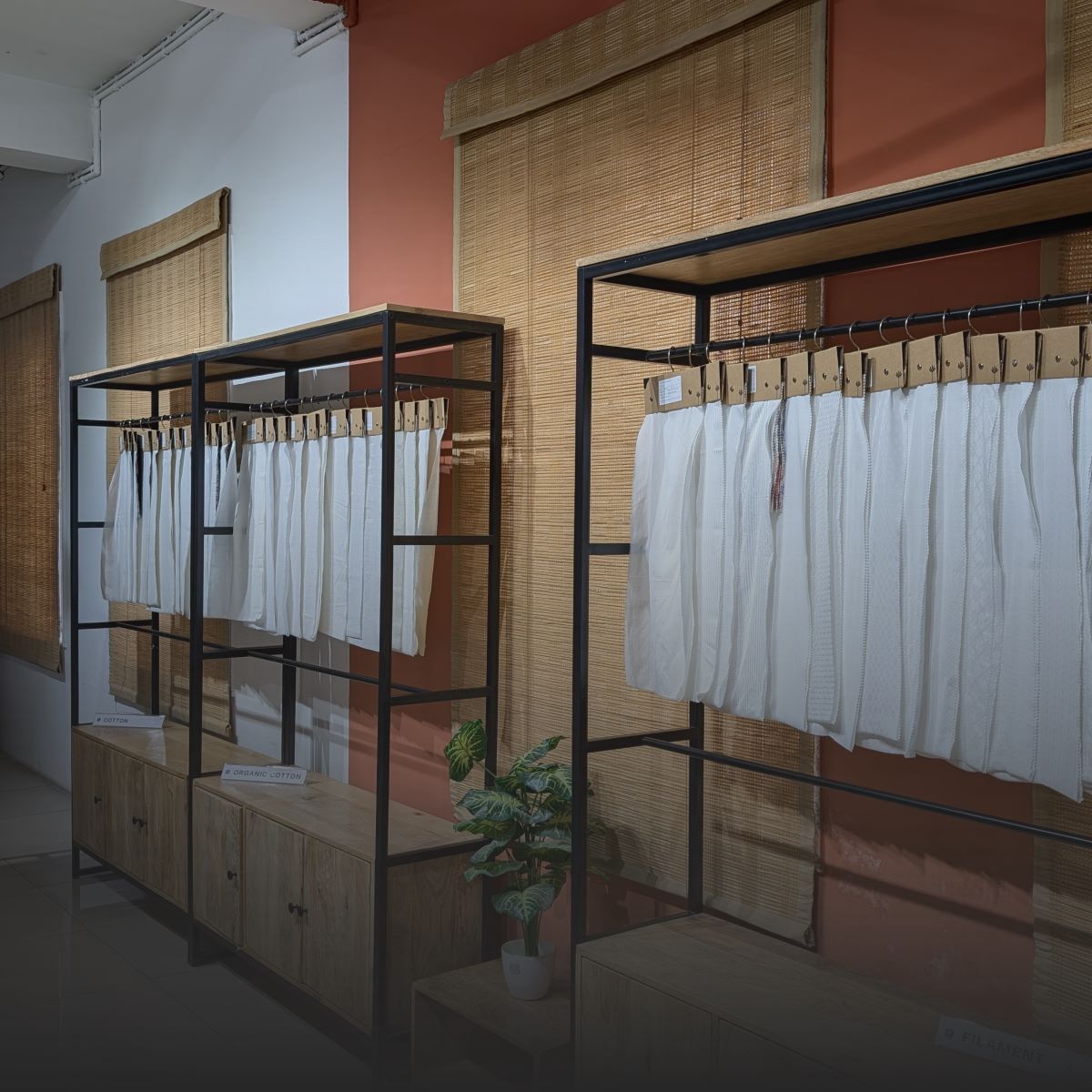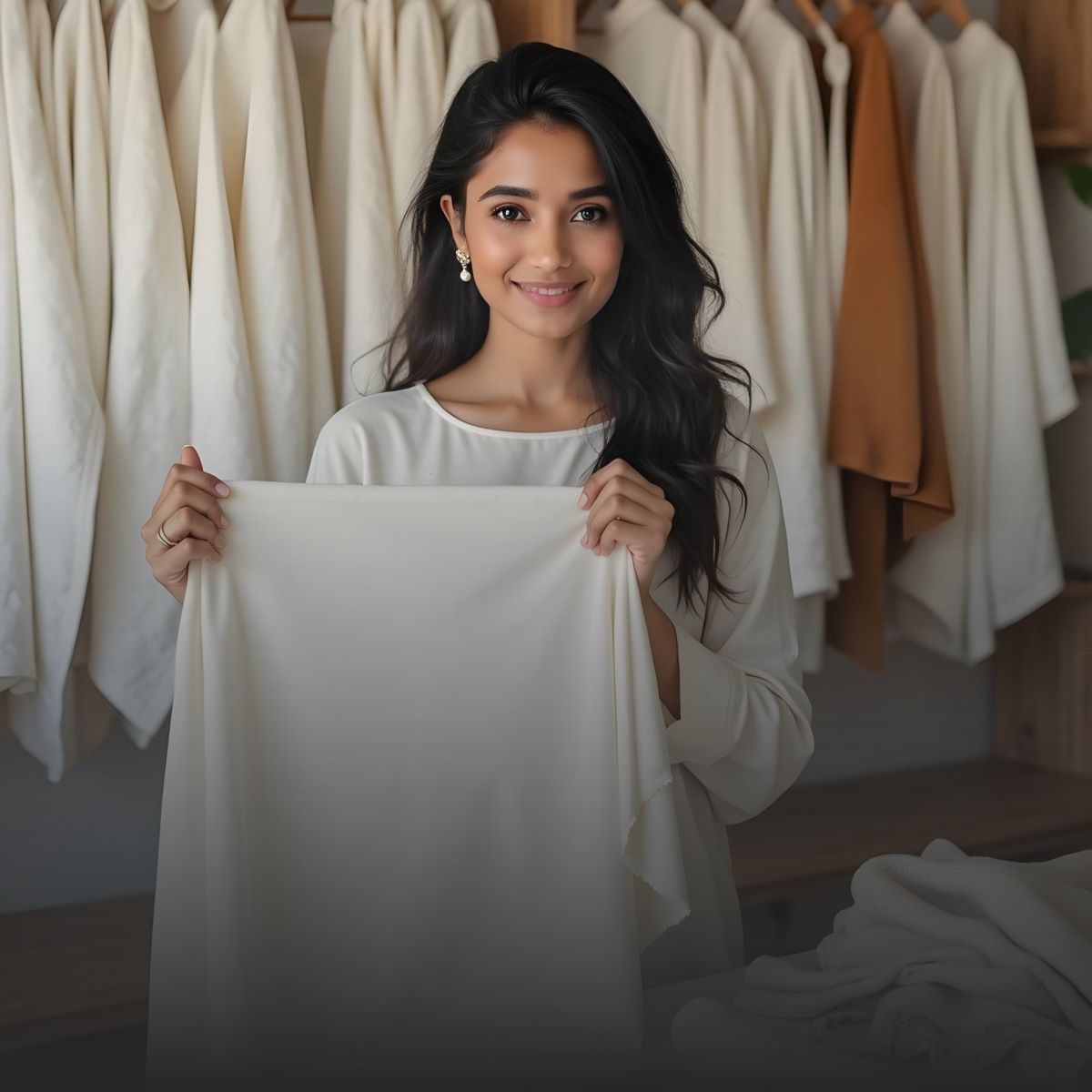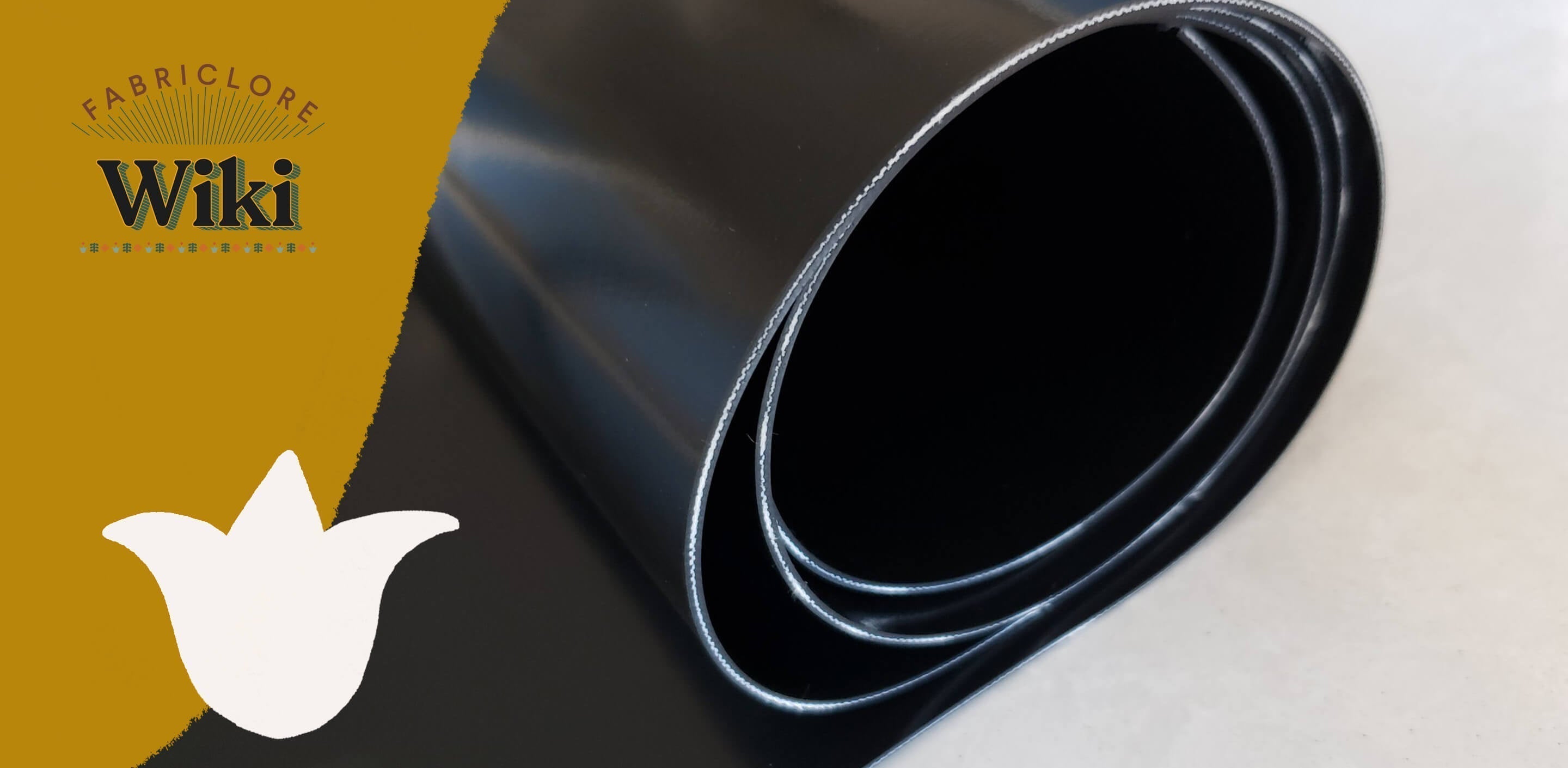Repp fabric — sometimes called rep, repp, or reps — is a distinctive ribbed textile with closely spaced cords that run across its width. It is popular in luxury clothing and upholstery; repp is valued for its texture, durability, and elegant appearance. This guide will explain what repp fabric is, how it's woven, its main properties, advantages and disadvantages, and common applications.
What Is Repp Fabric?
Repp is a woven cloth characterized by closely spaced horizontal ribs or cords that run across the fabric's width. The ribs are created through a warp-rib weave, where the warp threads dominate the structure. Traditionally, repp has been produced using silk, cotton, or wool, though blends are also common.
The term "repp" is believed to derive from the French word reps, and in some contexts, it is seen as a variation of the word "rib." This association reflects its most visible feature — the ribbed surface that gives it texture and character.
History & Context

Repp fabric has long been associated with elegance and formality. It became especially popular in Europe in garments such as neckties, ecclesiastical vestments, and luxury apparel, where its ribbed surface added sophistication. Beyond clothing, heavier repp fabrics were widely used in upholstery and home decor due to their durability.
Over time, repp has remained relevant because of its balance between strength and style, continuing to appear in ties, suits, furnishings, and decorative accents.
How Repp Fabric Is Made
The weaving process behind repp fabric is what gives it its unique look and feel:
- Warp-Rib Structure – The fabric is woven on a plain weave base, but with dominant warp threads that form the ribs.
- Yarn Selection – Thicker and finer warp yarns are alternated, creating visible ridges across the fabric's width.
- Weft Role – The weft threads are finer and less visible, allowing the ribs to stand out clearly.
The result is a fabric with distinctive horizontal ribs, ranging from subtle to pronounced, depending on the yarns and finishing used.
Key Properties of Repp Fabric

Repp fabric is prized for a combination of performance and aesthetic qualities:
- Ribbed Texture: Creates depth, elegance, and subtle sheen.
- Durability: The tight warp-dominant weave provides strength and resistance to wear.
- Weight: Often medium to heavy, making it suitable for structured garments and furnishings.
- Versatility of Fibers: Can be made from silk, cotton, wool, or blends to suit different uses.
- Refined Appearance: Ideal for formal and decorative applications.
Advantages and Disadvantages of Repp Fabric
Before selecting a rep fabric for a project, it is significant to acknowledge its benefits and limitations.
|
Advantages |
Disadvantages |
|
Distinctive ribbed texture adds elegance |
Rib surface may snag on jewelry or rough surfaces |
|
Strong and durable due to tight weave |
Heavier weight reduces suitability for lightweight garments |
|
Versatile across silk, cotton, wool, and blends |
Less flexible compared to plain weave fabrics |
|
Excellent for formalwear and accessories |
Ribbed surface may interfere with bold prints |
|
Drapes well in finer silk versions |
Requires careful care to preserve rib structure |
Repp vs Other Fabrics
Repp is often compared with smoother weaves like satin, sturdier options like twill, and decorative fabrics like brocade. Here's how it differs:
|
Property |
Repp |
Silk / Satin |
Twill / Gabardine |
Jacquard / Brocade |
|
Texture |
Ribbed / corded |
Smooth, glossy |
Diagonal weave |
Decorative motifs |
|
Weight |
Medium to heavy |
Light to medium |
Medium to heavy |
Medium to heavy |
|
Durability |
High |
Moderate |
High |
Varies |
|
Best Uses |
Ties, suits, upholstery |
Blouses, dresses |
Trousers, jackets |
Decorative clothing, drapery |
|
Flexibility |
Moderate |
High |
Moderate |
Moderate |
Applications of Repp Fabric

Repp fabric is highly versatile and appears in a wide range of uses:
- Neckties & Accessories: A classic choice for ties, bow ties, and ribbons.
- Apparel: Repp fabric can also be used in formal wear, including dresses, skirts, suits, and ecclesiastical garments.
- Home Decor: Heavier repp fabrics are popular for drapery, upholstery, and cushions.
- Decorative Uses: Ideal for trims, placemats, and accents where ribbed texture adds detail.
Key Takeaways
Repp fabric ribbed weave offers a distinctive surface, while its durability makes it suitable for both fashion and interiors. It also combines strength, elegance, and timeless style. Though heavier and less elastic than plain weaves, repp fabric remains a go-to choice for neckties, upholstery, and formal garments where structure and refinement are essential.
FAQs
1. What Is Repp Fabric?
Repp fabric is a woven textile with fine horizontal ribs across its width. It is usually made from silk, cotton, or wool and is known for its strength and elegant appearance.
2. How Is the Ribbed Effect Created?
The ribbed surface of repp fabric comes from warp dominance in the weave, where thicker and finer warp yarns alternate, creating raised cords.
3. What Materials Are Commonly Used?
Traditional repp fabrics are woven from silk, cotton, or wool. However, modern variations may use blends for added durability and performance.
4. What Are the Benefits of Repp Fabric?
Repp is durable, visually elegant, and versatile. It works well for ties, upholstery, and formal clothing thanks to its ribbed texture and structured weight.
5. What Are the Drawbacks?
The consequences of using Repp fabric are that it can be heavy, less flexible, and prone to snagging. Its ribbed surface also makes it less ideal for bold printed patterns.
6. Where Is Repp Fabric Used?
It is commonly used for ties, suits, dresses, upholstery, and trims. In ecclesiastical and ceremonial contexts, repp is also valued for its formal appearance.
7. How Should Repp Fabric Be Cared For?
Care of fabric is totally dependent on the type of fiber. Silk and wool repp fabrics are best dry-cleaned, while cotton repp can be gently washed. Always avoid harsh handling that could damage the ribs.
We also happen to be a magnet for suggestions, and would love to catch yours….throw us yours on hello@fabriclore.com




